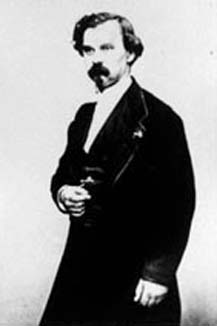Jules Antoine Lissajous | |
|---|---|
 Jules Antoine Lissajous, date and photographer unknown | |
| Born | 4 March 1822 |
| Died | 24 June 1880 (aged 58) Plombières-les-Dijon, France |
| Nationality | French |
| Known for | Lissajous figures |
| Scientific career | |
| Fields | Physics |
Jules Antoine Lissajous (French pronunciation: [ʒyl ɑ̃twan lisaʒu]; 4 March 1822 in Versailles – 24 June 1880 in Plombières-les-Dijon) was a French physicist, after whom Lissajous figures are named. Among other innovations, Lissajous invented the Lissajous apparatus, a device that creates the figures that bear his name. In it, a beam of light is bounced off a mirror attached to a vibrating tuning fork, and then reflected off a second mirror attached to a perpendicularly oriented vibrating tuning fork (usually of a different pitch, creating a specific harmonic interval), onto a wall, resulting in a Lissajous figure. This led to the invention of other apparatus such as the harmonograph.
See also[edit]
References[edit]
External links[edit]
- O'Connor, John J.; Robertson, Edmund F., "Jules Antoine Lissajous", MacTutor History of Mathematics Archive, University of St Andrews
Well, that’s interesting to know that Psilotum nudum are known as whisk ferns. Psilotum nudum is the commoner species of the two. While the P. flaccidum is a rare species and is found in the tropical islands. Both the species are usually epiphytic in habit and grow upon tree ferns. These species may also be terrestrial and grow in humus or in the crevices of the rocks.
View the detailed Guide of Psilotum nudum: Detailed Study Of Psilotum Nudum (Whisk Fern), Classification, Anatomy, Reproduction